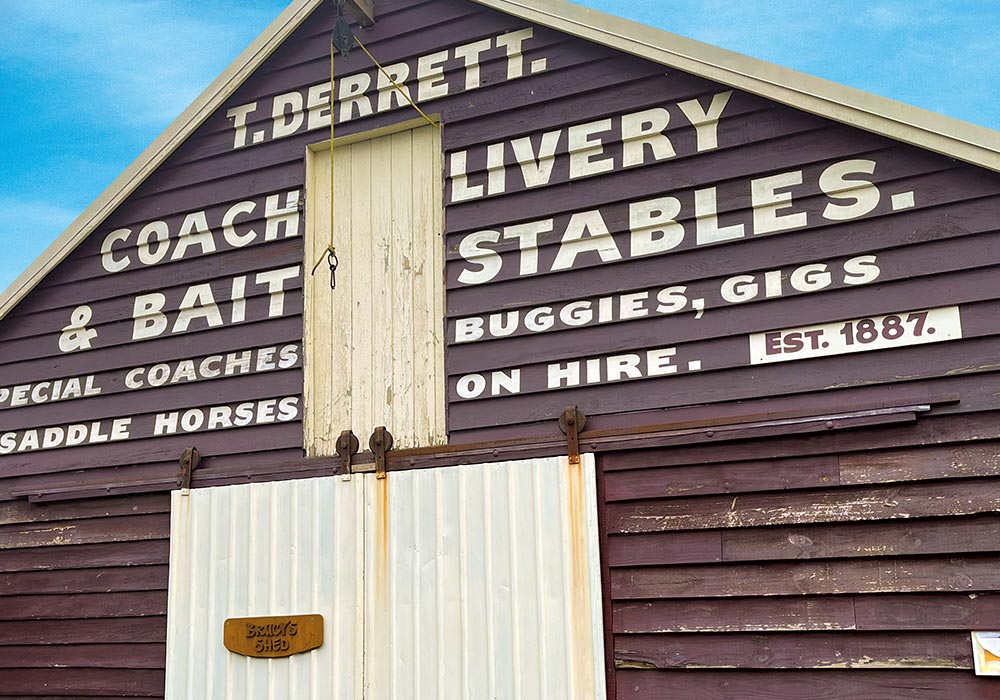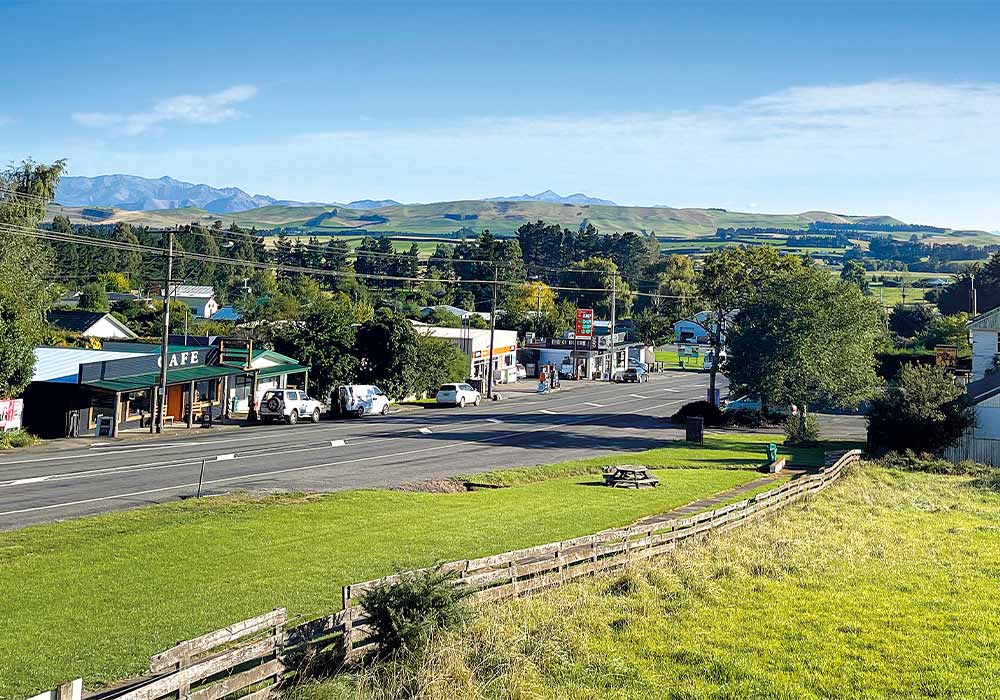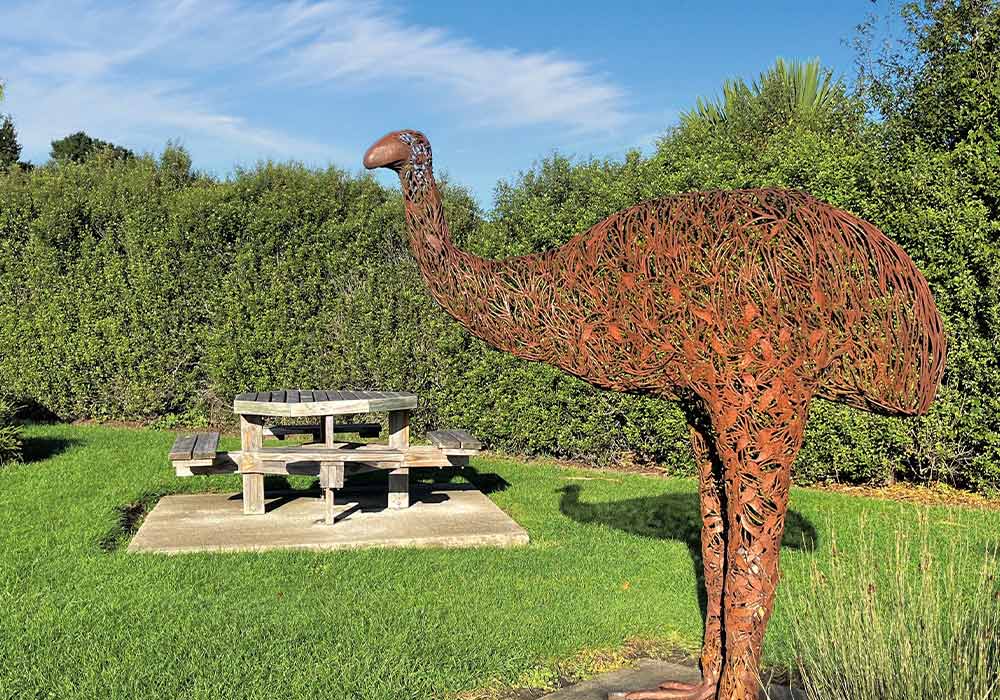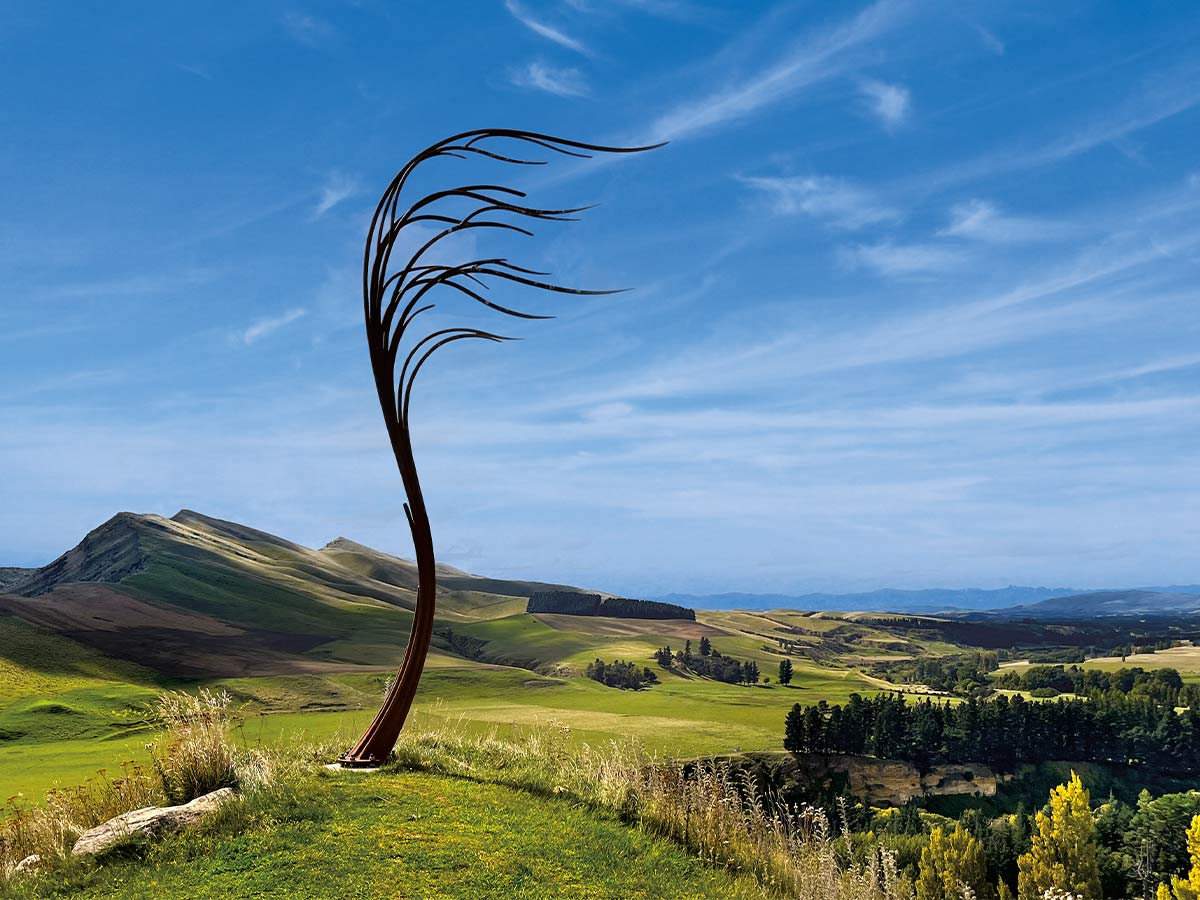For the curious RV traveller, one of the joys is coming across villages that are off the beaten track. Though tiny in size, they often have sizeable stories to tell. Jill Malcolm explores more.
Travelling from Kaikoura, we took the hilly, inland route through the foothills of the Inward Kaikoura Mountains. Where it reached the lumpy end of the ranges and ironed out onto the Northern Canterbury plains, a lonely little church of stone came into view; its tower leaning at a tipsy angle, its walls overgrown with foliage, and a mantle of long grass confirming its neglect.
The Waiau All Saints Church is victim of the 2016 earthquake and so damaged, it’s sadly unlikely to reach its 100th anniversary.
The village of Waiau, which is the only settlement on the 100-kilometre inland route, was just five kilometres from the epicentre of the so-called ‘Kaikoura earthquake’. It ripped the heart out of the little town and 28 buildings in a population of 280 were red stickered.
But the most significant wreck was the Waiau Lodge Hotel, the ‘Grand Lady’ that for more than 100 years had been the glue of the little community.
One of the oldest settlements in North Canterbury, Waiau has had its ups and downs before but nothing quite like this.
The evolution of Waiau

Michelle Peri, who with her friend and business partner, Lindsay Collins, bought the classic rural pub just a year before the catastrophe, was determined to raise money to restore it. In the meantime, a temporary tavern was built on the hotel’s car park and business continued.
Then, one dark night in 2021, the old hotel inexplicably caught fire and burnt to the ground.
“It broke our hearts,” says Michelle. “It still does.”
The space the hotel once occupied is now an RV park over property (POP). It’s free but users are encouraged to at least have a drink in the tavern (when you do, you will most likely stay). Small in size, the welcome is like a full-bodied hug. In no time, we were on first-name basis with the locals who were tucking into their beer and wine or battered blue cod, rib eye steak, and blue cod butties.
Village meanderings

Wandering the village, I found an old timber building, which had been built in 1887 when the Kaikoura inland route first opened. A small plaque proclaimed it was now ‘Brucy’s shed’ but the original signage, emblazoned in large letters, announced it to be a livery stable hiring out stagecoaches, buggies, and saddle horses.
The village was once an important transport hub for travel by horse in the early days, and in 1919, when horses were replaced by rail, Waiau became the terminus for a railway line that first ran through Waipara and Waikari. That ended in 1978, and there’s little reference of that time apart from in the small, cob house museum. However, a portion of the old line, from Waipara to Waikari, is still open for weekend steam train excursions through the Weka Pass, which links the two villages.
A neighbourly visit to Waikari

With that in mind, the next village to explore was Waikari. Set in an appealing valley with verdant views of the North Canterbury plains that stretch towards the Southern Alps, the tiny township comprises a small train terminal and an imposing (still-surviving) wooden pub called the Star and Garter. Established in 1864 as a stage-coach stop to and from Waiau, it now serves Thai food and DB Draft Beer.
In the small park behind the village centre is a wire statue of a moa, probably a reference to the multiple bones of that ancient bird found in the Pyramid Valley nearby. There are two cafes in Waikari. One, The End of The Line, exhibited a billboard on the pavement with a saying for the day: “Oh, pilates! I thought you said pie and lattes”. We had neither, choosing instead the Waikari Kitchen next door where we ate Swiss fondue toasties with hot chocolate.
This café/restaurant, built of timber and corrugated iron, reflects the hamlet’s rural setting. Owner and chef, Dean Sanders, a restaurateur, food writer, and TV chef from Europe came here to find a quiet of village life. He cooks everything in the café kitchen and when he can, mingles with the patrons.
“You can see I add European touches to the menu,” he told me. “Even though this appeals to travellers, I make sure it also suits the tastes of local farmers and workers. This is such a friendly community to work in and the three food outlets are cooperative rather than competitive.”
The adventure continues

From Waikari, we drove through Weka Pass and its eye-catching, oddly-shaped rocks to the village of Waipara. Once surrounded by sheep pasture, it’s now in the thick of one of the most significant wine regions in the country.
Of note in the village is a small, vine-covered, country store and the historic Glenmark Railway Station, which comes alive when the steam train departs for Waikari. The hype around the vineyards, wineries, gardens, and restaurants in Waipara Valley has blurred the character of this tiny town, but nothing can detract from the story of its past. In 1853, an Englishman, George Henry Moore, came to New Zealand and acquired a huge tract of land he called Glenmark. It became one of the largest sheep stations in the colony and possibly made him one of the richest men there also. It took seven years to build his extravagant mansion and in 1888, he moved in with his daughter, Anne. Three years later, the mansion went up in flames. The ruin still exists, along with the lavish but abandoned manager’s house, the colonial gate keepers house, and the expansive concrete stables that once housed 50 horses.
George, however, was no hero. He was nicknamed ‘Scabby’ and was once described as ‘mean, hard-hearted, barbarous, and blaspheming’.
His daughter was not of the same opinion, even though he forbade her to marry (she secretly did when he became old and blind). After her father died, Anne built an impressive red brick church in Waipara in his honour. It still stands but was badly damaged in the 2010 Christchurch earthquake and awaits sufficient funding for its restoration.
Unexpected sculptural landscapes

When we paused in the village, the only person about was a German backpacker who looked a bit wobbly (he could have been taking the fruits of Bacchus with gusto). But I have much to thank him for.
“You’ve seen that new sculpture park up the valley?” he asked during our conversation. He waved his hands in emphasis. “Very wunderbar,” he said.
On this advice, we drove across the river and along Ram Paddock Rd, past vineyards draped in wedding veils before tracing the deep-sided Waipara Valley to the Iron Ridge Sculpture Park. Developed in a disused limestone quarry, the German man’s opinion was right. It’s indeed wunderbar.
The quarry has been transformed into an attractive parkland where large, whimsical sculptures are displayed among the planted trees, shrubs, and ponds.
This is the dream come true of steel sculptor Raymond Herber, a welder, who when he turned his hand to sculpture, bought this spectacular space. Under towering limestone cliffs and overlooking dramatic sweeps of folded hills, he slowly transformed the raw site into what’s now a stunning space that intertwines around his works of art. We spent a happy hour wandering the gardens before driving back to Waipara village, where we pulled into a small campground called Waipara Sleepers, offering accommodation in refurbished 1940 railway carriages and has space for RVs.
Not enough space as I turned out. It was full, and so we struck out for Amberley, a sizeable and lively town that has quite a different story – perhaps for another day.






